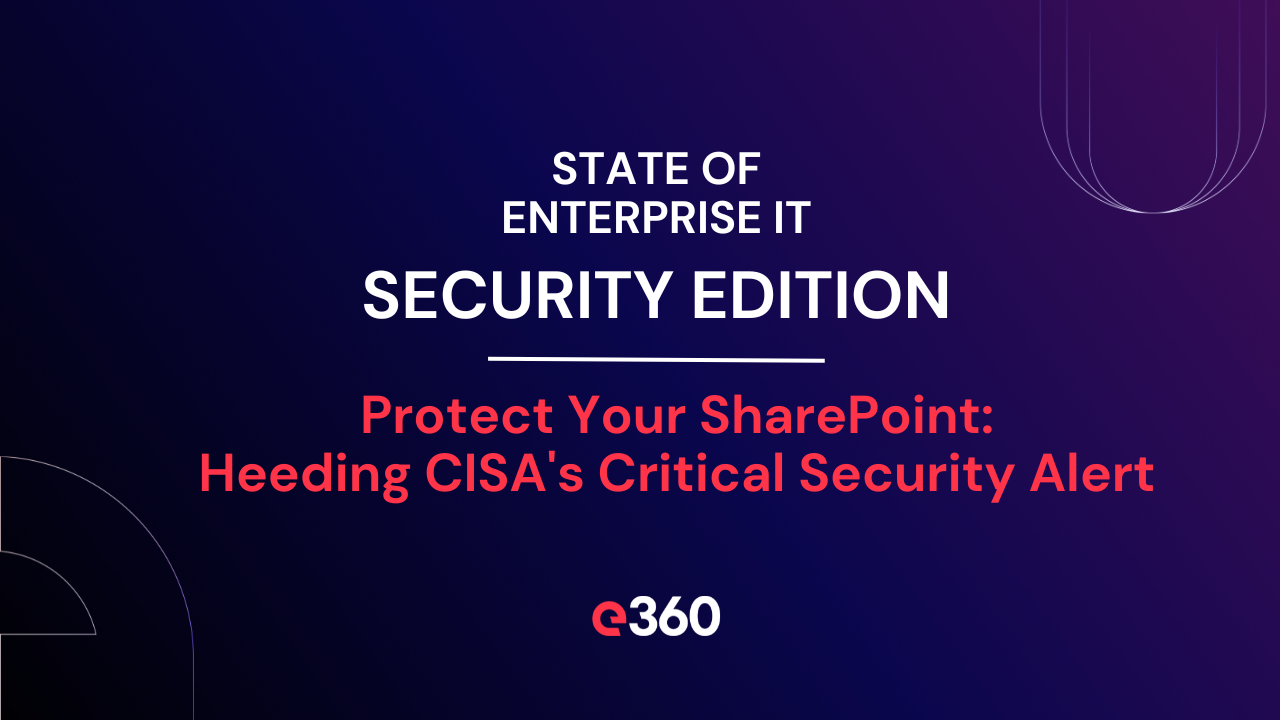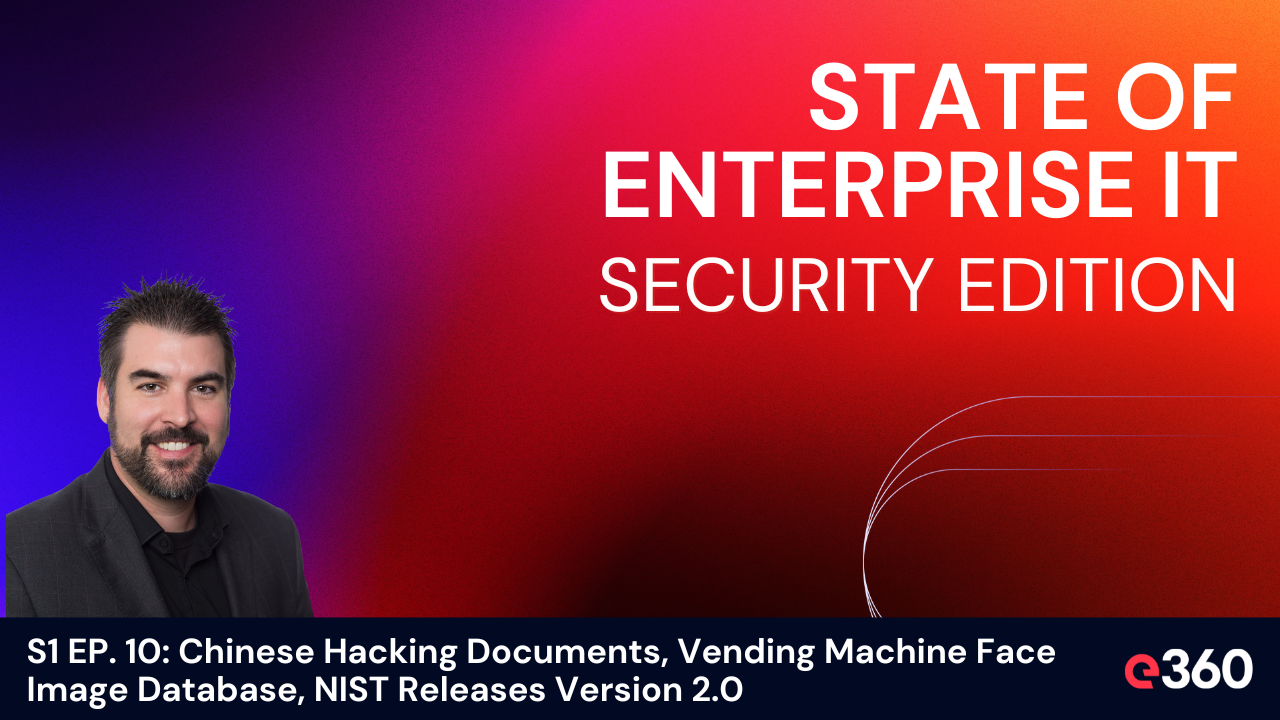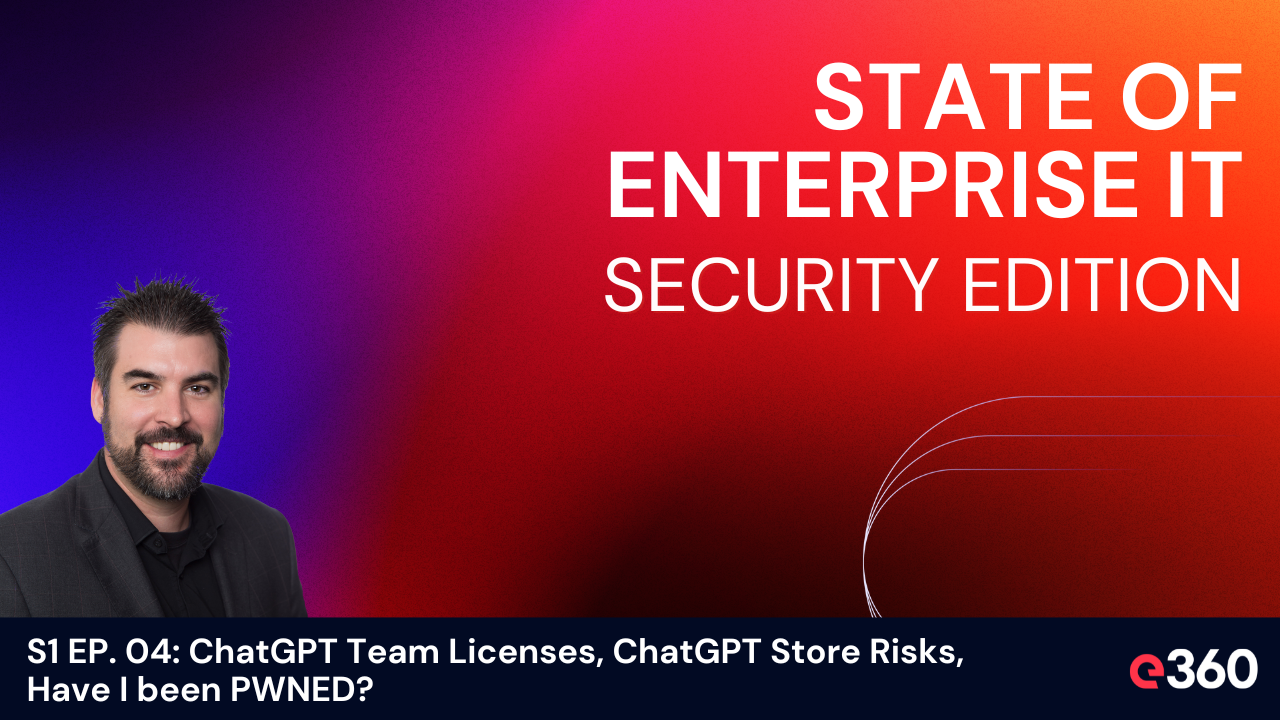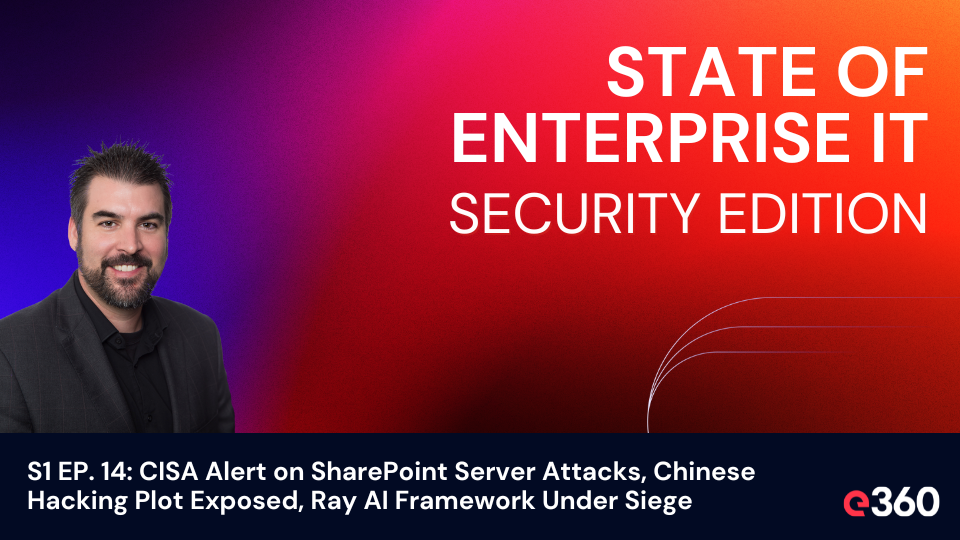In a recent discussion with e360's Chief Information Security Officer (CISO), Brad Bussie, the spotlight turned to a pressing cybersecurity alert issued by the Cybersecurity and Infrastructure Security Agency (CISA). The warning concerns a significant vulnerability in Microsoft SharePoint Server, highlighting the ever-present need for robust cyber defenses. Episode fourteen of the State of Enterprise IT Security Edition.
The Urgency of the Matter
Brad Bussie began the conversation by stressing the immediate relevance of the topic: "The first topic of today is CISA warns that hackers are actively attacking a SharePoint server vulnerability." This statement sets the stage for an exploration into the depths of cybersecurity vigilance required by organizations today.
Understanding the Vulnerability
CISA, the U.S. Cybersecurity and Infrastructure Security Agency, has pinpointed a security flaw within Microsoft SharePoint Server. This flaw, described as a "critical remote code execution flaw," empowers an authenticated attacker with site owner privileges to execute arbitrary code. As Bussie eloquently put it, "So think of this as a network-based attack where that authenticated attacker, as the site owner, could execute code remotely on a SharePoint server."
This flaw's severity is compounded by the fact that it was patched in May of 2023, yet remains a significant threat due to inadequate patching practices across the board.
The Importance of Patching
Brad Bussie emphasized the cornerstone of cybersecurity in his statement: "But as you've heard me say before, we could all be doing a better job when it comes to patching." This serves as a reminder of the basic yet crucial step in cybersecurity hygiene - keeping software up to date.
Further commenting on the response from Microsoft, Bussie noted, "Microsoft said, hey, back in May this was patched and customers who have enabled automatic updates, they got the update." This highlights an essential cybersecurity practice: enabling automatic updates to ensure immediate protection against known vulnerabilities.
Key Takeaways
- Immediate Action Required: Organizations must prioritize patching to protect against this exploited vulnerability.
- Enable Automatic Updates: To ensure systems are protected against emerging threats, enabling automatic updates is crucial.
- Stay Informed: Awareness of cybersecurity alerts and advisories can significantly mitigate potential risks to an organization's digital infrastructure.
Conclusion
As Brad Bussie's insights illuminate, the cybersecurity landscape requires constant vigilance and proactive measures. The alert from CISA about the SharePoint vulnerability is a stark reminder of the ongoing battle against cyber threats. "Patch your stuff," Bussie urges, highlighting a simple yet powerful action that can protect organizations from significant harm. In the digital age, staying informed and acting swiftly on cybersecurity advisories is not just recommended; it's imperative.
Episode fourteen of the "State of Enterprise IT Security" podcast is available now. For more insights into how technology shapes our world, stay tuned to our blog for the latest in enterprise IT security and beyond.



